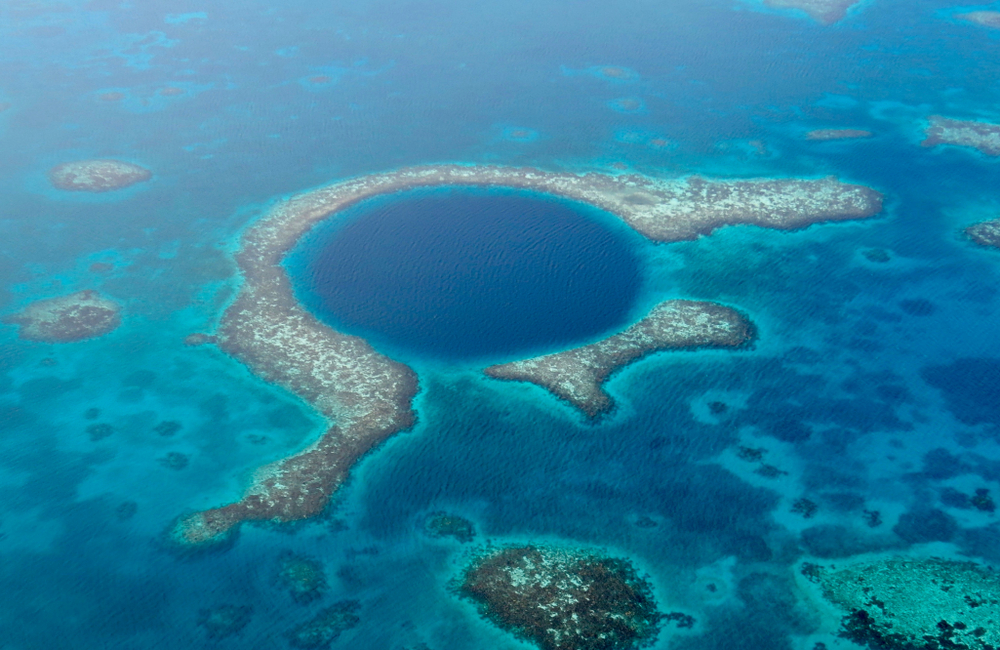
With the help of a local fisherman identified as Jesus Artemio Put Villa, scientists discovered the second deepest blue hole in the world in an unlikely place – the shallow Gulf of Chetumal, located on the southeastern side of the Yucatan Peninsula.
Filled with a hostile, oxygen-deficient environment, the newly named Taam Ja’ Blue Hole (TJBH) may one day prompt research into how life might survive on alien planets or other harsh environments.
What is a blue hole?
A blue hole is a vertical cavern, usually carved out of eroded limestone, that opens to the ocean floor with a rounded mouth, as is the case with TJBH. The deepest to date — the Dragon Hole in the South China Sea — measures 987 feet, making the new Chetumal Bay the second-deepest blue hole at about 900 feet, nearly the length of the Eiffel Tower. There are many other, shallower blue holes in the Caribbean, including Dean’s Blue Holenow the third deepest at 663 feet deep.
Read more: Biologists marvel at the pristine deep coral reef
How blue holes form
The researchers from Mexico proposed the formation of TJBH from flooding and erosion during the last ice age, given its dramatic depth. To investigate it, they ventured out with both scuba gear and a submarine, diving all the way down to the lowest layer of the hole with the least oxygen to take water samples. They found that the waters there were cold, slightly acidic and almost completely devoid of oxygen, thanks to the lack of photosynthesis.
Only microbes specially adapted to life without oxygen can survive in such “anoxic” layers, including those that metabolize sulfates, chemicals toxic to most other life forms. Alien microbes with limited access to oxygen can produce energy in similar ways.
Read more: Ocean bacteria glow to become bait
What is the hole in the ocean made of?
Along the walls of this ocean hole, researchers found rocky outcrops covered in sediment and biofilm, a slimy layer of bacteria. Meters of “mucoid threads” floated freely in the water, and tiny worms and dead crustaceans covered the limestone. Such filaments have been found in other oxygen-deprived blue holes.
Higher up in the water column, the researchers found a layer of “detrital particles” collected from the surrounding ocean, like an aquatic garbage can.
The study identified three layers in the hole as a whole: a saline hypoxic layer at the top with slightly reduced oxygen content; hemocline layer in the middle covered with ammonium, sulfates, sodium and other chemicals; and finally, the oxygen-starved anoxic layer at the bottom. Scientists found a similar stratification in the Dragon Hole and Amberjack’s Blue Hole in the Gulf of Mexico.
Read more: Bacteria are eating the Titanic
Ocean Sinkhole Pools
TJBH is located near a group of ocean basins with water-filled sinkholes that locals call “pozas” (pools), and the new paper suggests they should also be classified as blue holes. Their limestone shape suggests that they were formed in a similar way: roughly circular, with steep walls and extending deep below sea level.
The interaction of limestone and water has created other wonders in the area, including the famous sinkholes in the cenotes, formed when an upper layer of rock collapses, exposing groundwater. The Maya used cenotes as a water supply and sometimes for ritual purposes.
Read more: The search for Earth’s subsurface oceans

